1847 – Štefan Klč
Štefan Klč (Š is pronounces “sh” and č is pronounced “ch”) was born on August 7, 1847 to Tomáš Klč and Zuzana Štefik in House #425 in the town of Myjava which was in Nyitra kraj (the Nyitra region), in Uhorské kráľovstvo (the Kingdom of Hungary).
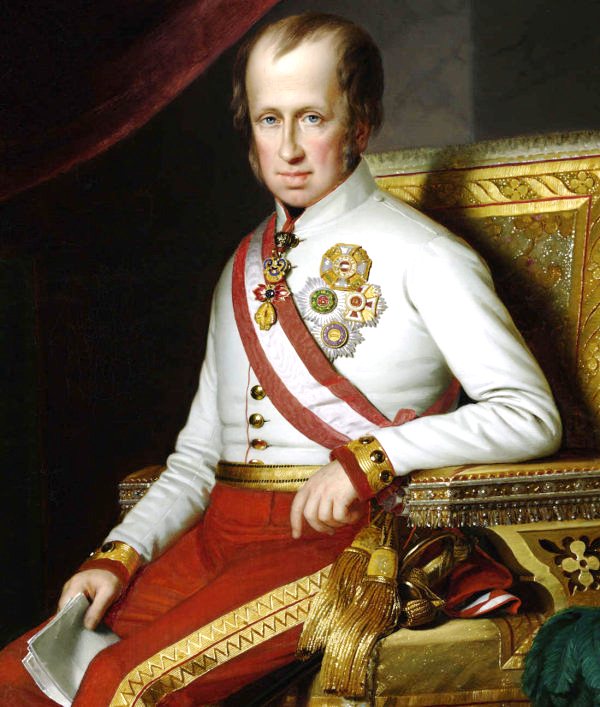
The area was ruled by Ferdinánd V, whose titles included the Emperor of Austria, King of Hungary, King of Lombardy-Venetia, and King of Bohemia. The people of Myjava were ethnic Slovaks, but they could not claim the name “Slovakia” for their land. For nearly ten centuries, they had been part of the Kingdom of Hungary. When Štefan was one year old, the town of Myjava would be at the very center of a revolution for Slovak independence.
On the day after his birth, Štefan was baptized by Pastor Jánoš Schulz at the town’s Lutheran church known as the Evanjelická Cirkev Augsburského Vyznania (the Evangelical Church of the Augsburg Confession) in Myjava. His baptismal sponsors were Sámuel Doška and Alžbeta Wiskup.
Slovakia, Hungary
The region had been settled first by Celtic tribes around 400 BCE, then by Germanic tribes, and finally by Slavic tribes over the course of several centuries. The major political regions that emerged consisted of three historic lands: Bohemia and Moravia in the west (often called the Czech Lands) and Slovakia in the east.
Slovakia had been ruled by Hungary for almost 1,000 years and was known as Horné Uhorsko (Upper Hungary) because the region was located on the foothills of the Carpathian mountains. From 1526 to 1918, the Kingdom of Hungary came under the control of the Habsburg monarchy, which had ruled areas around Austria since 1276. The Slovak name of the kingdom was Uhorské kráľovstvo.
In the late Middle Ages, Hungary was known informally by the Latin terms Natio Hungarica and Hungarus. By the 1840s, it was known in official documents as the Regnum Hungariae (Kingdom of Hungary) or the Regnum Marianum (Kingdom of St. Mary) or simply Hungaria. The German name (Königreich Ungarn) was used from 1849 to the 1860s, and the Hungarian name (Magyar Királyság) was used from the 1860s to 1918. When the Austro-Hungarian Empire was formed in 1867, the term Lands of the Holy Hungarian Crown of Saint Stephen was officially used for the Hungarian part of Austria-Hungary.
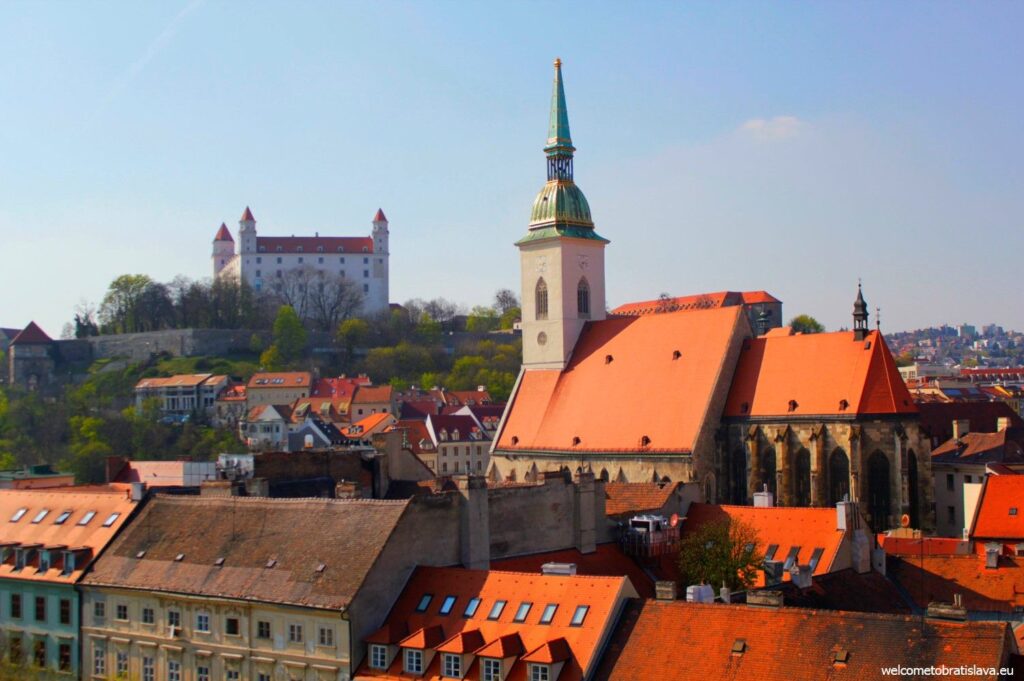
In the sixteenth century, Hungary served as a buffer between the Ottoman Empire of the Turks and the Holy Roman Empire to the west and the Kingdom of Poland to the north. As the Turks encroached on Hungarian soil, they captured the area that is today the modern nation of Hungary, while another Hungarian region, Transylvania, became a Turkish protectorate. Only Slovakia was left as the remaining independent piece of the Kingdom of Hungary. In 1536 it became known as “Royal Hungary” with Bratislava, as the capital. From 1526 to 1830, nineteen Habsburg sovereigns were crowned “Kings and Queens of Hungary” in the St. Martin’s Cathedral in Bratislava. At the time, Bratislava was known as Prešporok (in Slovak), Pressburg (in German), and Pozsony (in Hungarian). Bratislava remained the capital of Hungary until the Turks were finally ousted from Central Europe in 1786 and Buda became the capital city.
Myjava
The Myjava River flows through the town of Myjava which is located in the Myjava Highlands at the foothills of the White Carpathian Mountains, not far from the range known as the Little Carpathians. It is situated just 10 kilometers away from the modern border with the Czech Republic.
Today, Myjava is the administrative center of the okres Myjava (Myjava district) which consists of 2 towns and 15 villages. The town and district are located in Trenčiansky kraj (the Trenčín region). The area is also part of a tourist region called Stredne Povazie.

The town of Myjava was founded in 1586. The area had been settled centuries before in what has been called the Valach or Wallachian colonization wave. From the 10th to the 13th centuries, shepherds known as the Valaši, who lived in present-day Romania, began moving their flocks of Valašsko (Wallachia) sheep to new pastures high in the Carpathian Mountains. The Wallachian sheep were small, with rough wool, and were able to withstand the harsh conditions of living in the mountains yet could produce relatively high yields of milk.
The Valaši were looking for refuge from the destructive raids of various Eastern tribes and from the continuing threat of the Ottoman Empire. This gradual Wallachian colonization spread across the entire mountain area of Slovakia as well as the Carpathian regions of southern Poland. By the end of the 15th century it reached the end of its migration in the Moravian area now known as Valašsko (Wallachia).
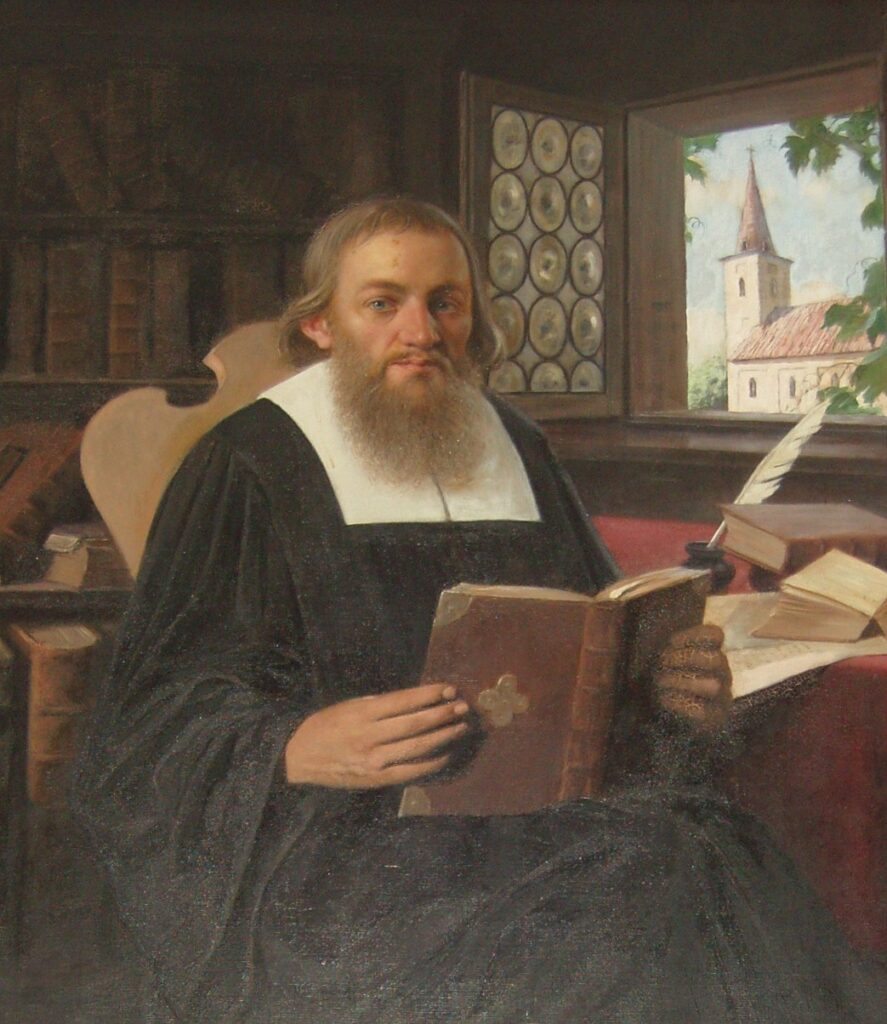
Myjava was connected with the name of a Lutheran pastor named Daniel Krman (1663-1740) who was known for his scientific and literary activities. He established the original Protestant church in Myjava dating back to 1711. In 1785, a new evangelical church was constructed and in 1856 a tower was added. This building is the dominant landmark in Myjava.
In 1848, the inhabitants of Myjava were involved in the struggle for the liberation of Slovakia that culminated in the first Slovak Uprising. During that year, a revolution broke out in Hungary which dealt with the liberation of peasants from serfdom. Encouraged by the revolution, and concerned that the newly-formed Hungarian government favored continued Magyar domination of a centralized government, culture and language, a group of Slovak leaders drafted the Petition of the Slovak Nation in May 1848. It demanded equality for the various nationalities within Hungary. The petition stated:
“The Slovak Nation in Hungary, as the indigenous population of this country, is awakening to a new life after 900 year dream. The Slovaks are aware that this sacred land, this mother country, which is the origin and cradle of the old glory of their ancestors and the place where their forefathers and heroes shed their blood for the Hungarian Crown, has been until recently their stepmother. Hungary has kept their language and nationality in the shackles of degradation and disrespect… the Slovak nation under the banner of the age of equality calls all the nations of Hungary to equality and fraternity.”
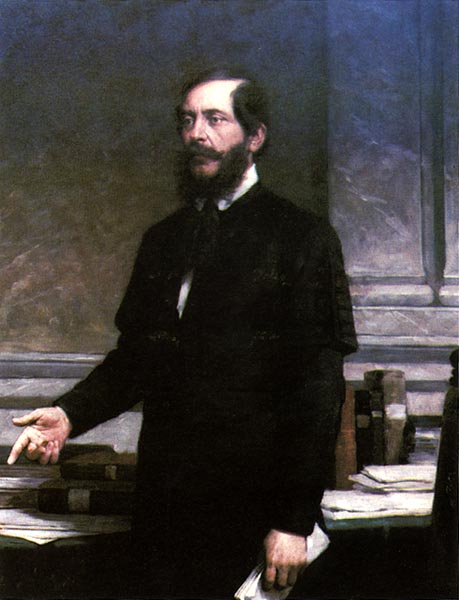
However, the Hungarian revolutionary government, headed by Governor-President Lajos Kossuth, refused to grant equality to the ethnic nationalities within Hungary. Although Kossuth was himself of Slovakian ancestry, he considered himself an ethnic Hungarian and insisted that there could be no independent Slovak nationality or ethnicity within the nation of Hungary. The Slovak’s revolutionary demands were met with repressive measures by Kossuth’s government.
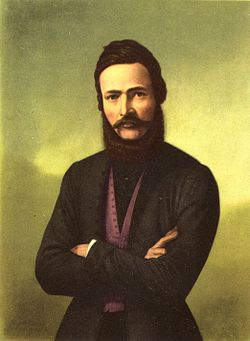
This in turn provoked the formation in September 1848 of a Slovak National Council under the leadership of Jozef Miloslav Hurban (1817-1888), Ľudovít Štúr (1815-1856), and Michal Miloslav Hodža (1811-1870). Ľudovít Štúr, a Lutheran, was the leader of a Slovak national revival in the 19th century, and the author of a Slovak language standard that eventually led to the contemporary Slovak literary language.
On September 19, 1848, the Slovak National Council founded by Štúr, Hurban and Hodža held their initial meeting at a public gathering in Myjava as the first national authority in Slovak history, representing the political and military power of Slovakia. They announced the independence of Slovakia from the government in Budapest and began an armed uprising for national liberation and self-determination. In three military campaigns, and corresponding political activity, the Slovak National Council struggled over the next year to secure an equal standing for the Slovak people in the family of European nations.
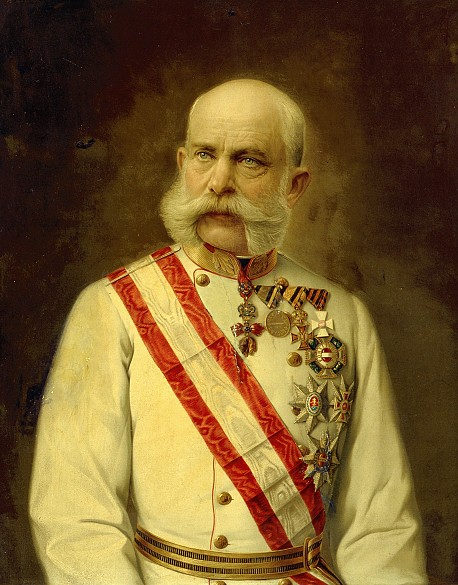
Between November 1848 and April 1849, armed Slovak military units helped the Habsburg king, Franz Joseph, defeat the Hungarian revolutionary government on Slovak territory. In March 1849, the Slovaks even temporarily managed to administor Slovakia themselves. However, in the summer of 1849, Russian forces helped the Habsburg king defeat the revolutionary Hungarians and in November, when the Slovaks were not needed anymore, the Slovak army corps were dissolved in Vienna. In December 1851, King Franz Joseph abolished the last vestiges of constitutionalism and began to rule Hungary as absolute master. The quashing of the Slovak uprising signaled an end to a vision of a Slovak nation for many years.
At the end of the 19th century, many people left Myjava and emigrated, mainly to the United States. The town was completely rebuilt after the Second World War.
Trenčiansky kraj
A kraj is the highest-level administrative unit in the Czech Republic, Slovakia, and historically in Czechoslovakia. For lack of other English expressions, the term is often translated as region, territory, or province. A kraj is subdivided into okresy (districts).
The Trenčiansky kraj (Trenčín Region) is one of eight Slovak administrative regions today. It consists of 9 districts (okresy).
Formerly, the area was the Trenčiansky komitát of the Kingdom of Hungary. A Hungarian komitát (comitatus in Latin) was the name of a historic administrative county. The Trenčiansky komitát shared borders with the Austrian lands of Moravia and Galicia and the Hungarian counties of Árva (Orava), Turóc (Turiec) and Nyitra (Nitra). The river Váh flowed through the county. Trenčiansky komitát arose at the end of the 11th century, when most parts of the territory were conquered by the Kingdom of Hungary.
Okres Myjava (Myjava district) is a district in the Trenčín Region of western Slovakia. Until 1918, the district was part of the Hungarian county of Nitra. It contains the town of Myjava.

Nové Mesto nad Váhom District (okres Nové Mesto nad Váhom) is a district in the Trenčín Region of western Slovakia. Until 1918, the district was mostly part of the Hungarian county of Nitra, with an area in the north forming part of the county of Trenčín. It contains the towns of Lubina, Hrušové, Bošáca, and Moravské Lieskové.
1856 – Anna Plašenka
Anna Plašenka was born November 29, 1856 to Jiriho Plašenka and Anna Pavlovik in House #39 in Hrušové, Slovakia, Hungary. Anna was baptized the same day.
Hrušové
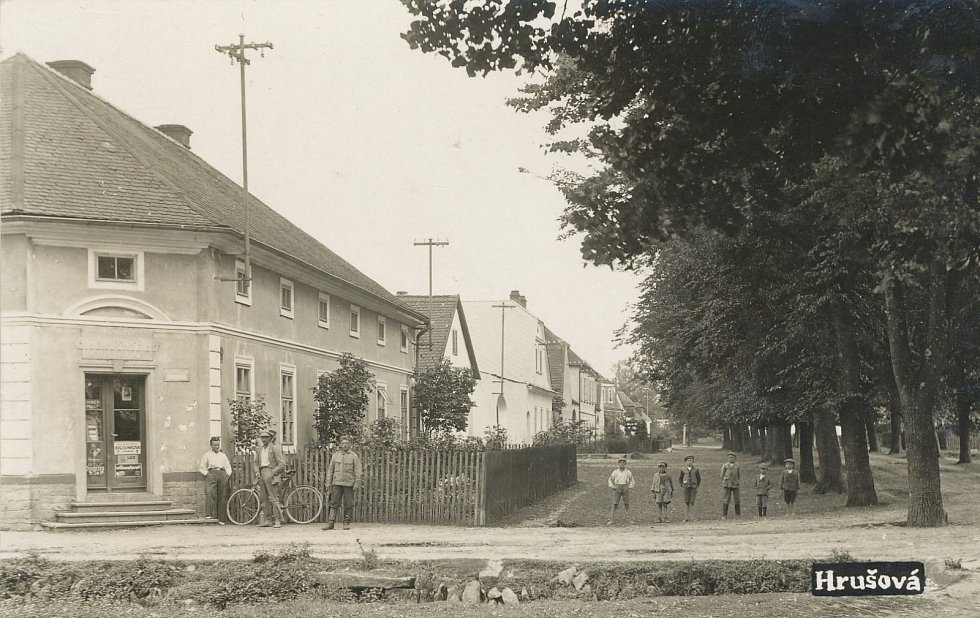
Today, the village of Hrušové is in the Nové Mesto nad Váhom District in the Trenčín Region of western Slovakia. Hrušové is less than a mile southeast of the larger town of Lubina.
1872 – marriage
Štefan Klč married Anna Plašenka on May 12, 1872 in either the village of Hrušové or in Myjava, Stefan’s home town. Or perhaps they married in the Evangelical Church in nearby Lubina, about a mile and a half from Hrušové.
Štefan Klč became a miller in Hrušové like Anna’s father, Jiriho Plašenka. We don’t know if Stefan learned this trade after his marriage by working for his father-in-law, or if he was apprenticed to Jiriho Plašenka before his marriage and the situation led to him marry the boss’s daughter.
1878 – 1885: children
Štefan and Anna had three daughters all born in House #39 in Hrušové.
- Katerina was born on July 7, 1878
- Anna was born on April 18, 1881
- Eva was born on September 6, 1885
1900 – 1909
We have little information about the life of the older sister Katerina except that she married Martin Macúch.
At age 18, Eva Klč married Štefan Ochodnický, who was nearly 26, on February 16, 1904 at the Evangelical (Protestant) Church in the town of Lubina. Lubina is less than a mile northwest of Hrušové, and was the site of the church that served the surrounding villages. Štefan Ochodnický had been born on March 3, 1878 in the village of Moravské Lieskové which lies about three miles northeast of Hrušové.
Nine months later, on November 25, 1904, Štefan and Eva Ochodnický gave birth to their first child, Ján (John). The record shows his birthplace as Lubina. However, it is most likely that his birth was registered at the church in Lubina but that he was born in Hrušové.
Štefan emigrated to the United States in 1906 and Eva followed a year later in 1907. They settled in St. Louis, Missouri. When Eva emigrated to the United States she left her 2 ½ year old son Ján behind. He was raised by his maternal grandmother Anna Klč for the next decade until her death in 1919. In the meantime, Štefan and Eva had more children on this side of the Atlantic. (See Štefan Ochodnický and Eva Klč)
1921 – Anna Klč and Martin Plašenka
Anna Klč married twice. Her first husband, who she married in Slovakia, was Ján Znachor, born on February 14, 1877 in Hrušové. They also emigrated to St. Louis, sometime around 1910. John Znachor was listed in St. Louis city directories in 1913 and 1916 as a fruit merchant. /his naturalization papers from April 1917 state that he was 5′ 7″ tall and weighed 270 pounds. The family lore says that John became an alcoholic and was unwilling to work as hard or as reliably as Anna expected. She divorced him on January 13, 1921 and he returned to Slovakia. He reportedly died about 18 months later.
Within a few weeks of her divorce, on February 3, 1921, Anna married Martin Plašenka, who shared her mother’s maiden name. We don’t know their exact familial relationship. Perhaps they were cousins. Martin Plašenka was born in House #38, next door to the Klč house at #39 so they must have been close childhood friends. Interestingly, Znachor was the maiden name of Martin Plašenka’s mother, which leads to additional questions about their inter-relationships. After all, Hrušové was a very small village, so none of this should seem very unusual.
In the Soulard neighborhood of St. Louis, Martin and Anna bought property on Sidney Street at 12th Street and opened a grocery store.
deaths
Stefan Klč died in Hrušové, but we have no record of his death date. After he died, the mill in Hrušové was reportedly taken over by Anna’s brothers— Plašenkas whose names are unknown.
Anna Plašenka Klč died in Hrušové at age 62, on August 22, 1919. In 1920, Štefan and Eva sent for their son Ján and brought him to America. He was sixteen years old and had no memory of his biological parents. (See Štefan Ochodnický and Eva Klč)